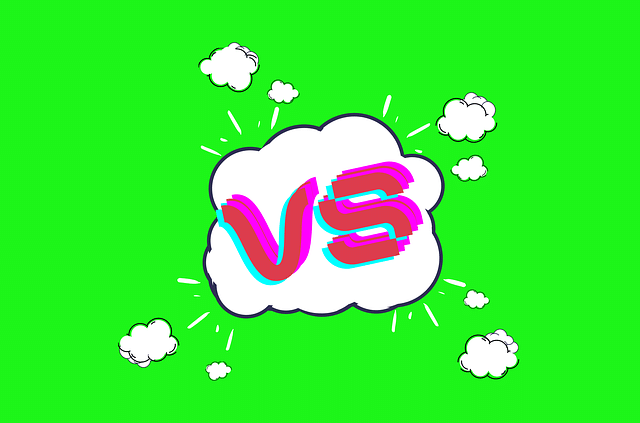Both short-form and long-form content can be valuable for engaging your audience. However, knowing when to choose short-form versus long-form content depends on multiple factors, such as your audience, the platform, the topic, and the budget. I have gotten different levels of engagement while using these two forms of content, and I’ll break down the key differences and advantages of using short-form vs long-form content in this article.
Key Takeaways
- Short-form content refers to any content that is brief and straight-to-the-point, typically under 1,000 words or a few minutes long. Long-form content, on the other hand, refers to any detailed and comprehensive content, typically over 1,000 words or longer.
- Typically, short-form content includes social media posts, short videos, and blog snippets. Long-form content includes in-depth articles, blog posts, eBooks, webinars, and extensive guides.
- Short-form content is quick to produce, allowing for frequent updates and keeping the audience engaged with regular content. Long-form content is time-consuming and requires thorough research, planning, and writing
Short Form Content vs Long Form Content: General Overview
We’ll first start by understanding what short-form content and long-form content means.
Short-form content refers to any content that is brief and straight to the point, typically under 1,000 words or a few minutes in length. This type of content is designed for quick consumption and immediate engagement.
The primary purpose of short-form content is to engage users quickly. It’s often used for quick updates, promotional messages, or content that aims to go viral. The key is to instantly capture the audience’s attention and encourage them to engage with the content by liking, sharing, or commenting.
Long-form content, on the other hand, refers to any content that is detailed and comprehensive, typically over 1,000 words or longer in length. This type of content is designed to provide in-depth information and a thorough analysis of a topic. The purpose here is to educate, inform, and establish authority. Long-form content is ideal for topics that require detailed explanations or for audiences seeking in-depth knowledge. It allows for thoroughly exploring a subject, making it a valuable resource for readers.
Short Form Content vs Long Form Content: What Are Their Characteristics?
Characteristics of Short-form Content
Short-form content is designed to be consumed quickly and easily, making it perfect for the fast-paced world we live in. Typically, short-form content includes social media posts, short videos, and blog snippets. Think of a tweet, an Instagram story, or a TikTok video – all designed to grab attention and deliver a message in a matter of seconds. Here are some characteristics of short-form content:
- Length: Typically less than 1,000 words or a few minutes in duration. The content is brief and to the point, designed to be quickly consumed and easily shared.
- Formats: Social media posts (tweets, Instagram stories, Facebook updates), short blog posts, infographics, memes, and short videos (TikTok, Instagram Reels, YouTube Shorts).
- Purpose: The main goal is quick engagement. Short-form content aims to capture the audience’s attention as briefly as possible, making it ideal for spreading brand awareness, driving quick interactions, and capitalizing on trends.
- Platform Suitability: Platforms like Twitter, Instagram, TikTok, and Snapchat are perfect for short-form content due to their focus on brief, engaging updates.
- Production Time: Quick to produce, allowing for frequent updates and keeping the audience engaged with regular content.
Characteristics of Long-Form Content
Long-form content goes deep into a topic, providing comprehensive information and analysis. This content includes in-depth articles, blog posts, eBooks, webinars, and extensive guides. Long-form content typically exceeds 1,000 words or involves longer videos and podcasts. Here are some of the characteristics:
- Length: Usually more than 1,000 words or longer videos/podcasts. Long-form content is detailed and comprehensive, providing in-depth information on a subject.
- Formats: In-depth articles, whitepapers, eBooks, comprehensive guides, webinars, and long videos/podcasts.
- Purpose: To educate, inform, and provide value. Long form content is designed to establish authority, offer detailed insights, and serve as a resource for readers looking for extensive information.
- Platform Suitability: Blogs, websites, and platforms like Medium, LinkedIn, and YouTube are suitable for long form content. These platforms support and promote detailed, valuable content.
- Production Time: Time-consuming and requires thorough research, planning, and writing. The effort results in high-quality content that can drive long-term engagement and provide substantial value to the audience.
Short Form Content vs Long-form Content: Key Differences

Here are the key differences between short form and long form content:
#1. Depth of Information
Short Form content is brief and straight to-the-point, focusing on a single idea or message. It’s designed for quick consumption and immediate impact. Long form content, on the other hand, is comprehensive and covers multiple aspects of a topic in detail. It provides in-depth analysis and thorough exploration of the subject matter.
#2. Engagement
Short-form content drives high immediate engagement due to its quick consumption nature. It’s designed to be shared and commented on, often going viral quickly. Long form content encourages sustained engagement, with readers spending more time on the content. This leads to deeper interactions and a more engaged audience.
#3. SEO Impact
Short-form content helps with frequent updates and social signals, driving traffic from social media platforms. However, it might not provide the same SEO benefits as long form content. Long-form content boosts SEO through in-depth keywords, better backlink potential, and longer on-page time. It’s more likely to rank higher on search engines due to its comprehensive nature.
#4. Content Creation Time
Short-form content is faster to produce, allowing for more frequent posting. It requires less time for research and creation. Long-form content, on the other hand, is more consuming, requiring thorough research and planning. The effort results in high-quality, valuable content that stands out.
#5. Audience
Short-form content appeals to a broader, more casual audience looking for quick content. It’s ideal for capturing the attention of a wide range of users. Long-form content attracts a niche audience with a strong interest in the topic. It caters to readers looking for detailed, in-depth information and insights.
Short-Form vs. Long-Form Content: Pros and Cons
Pros and Cons of Short-Form Content
Some of the best reasons to use short-form content are that it’s:
- Easier for users to consume
- Typically mobile-friendly
- Less resource-intensive to produce and easier to scale compared to long-form content
- Sharable due to its brief and often punchy nature
Some of the downsides is that it:
- Doesn’t allow you to cover a topic in depth, which can lead to oversimplification or skipping key details
- Can easily start to seem repetitive if it’s not produced with a well-planned strategy
- Often has a shorter shelf life than evergreen content, so its relevance can fade quickly
- Might not establish your authority as well as long-form content given the limited space
Pros and Cons of Long-Form Content
Some of the main advantages of long-form content are that it:
- Stands a better chance of getting keyword rankings that boost visibility in search engines
- Tends to earn more backlinks (links on other websites that point to your website) that can improve your search engine rankings
- Often stays relevant and attracts traffic and engagement for longer periods of time
- Can be reworked and shared on other platforms, giving you more value for your effort
- Helps to position you as a thought leader in your industry, especially when it includes original research and insights
But long-form content has some downsides. Such as that it:
- Often takes more time and resources to produce
- Doesn’t always display properly on mobile devices. Which can impact user experience and SEO.
- Might overwhelm or discourage people who prefer snackable content
- Doesn’t always garner as much engagement or inspire action
Short-Form Content vs Long-form Content: When Should You Use One?

Short form content is perfect for moments when you need to make a quick impact. Here are some scenarios where you can effectively use short-form content:
#1. Quick Updates and Announcements
This involves sharing company news, product launches, or event reminders. An example is a tweet announcing a flash sale or an Instagram story about an upcoming event.
One of my most successful campaigns involved launching a new product for a client. We used short form content to create a buzz. We crafted catchy tweets, Instagram stories, and short teaser videos. The result? A significant spike in social media engagement and immediate interest in the product.
#2. Social Media Engagement
This involves maintaining a regular presence on platforms like Twitter, Instagram, and TikTok. E.g, posting daily updates, behind-the-scenes content, or quick tips.
#3. Teasers and Previews
Generating interest in upcoming content, products, or events. An example of this is a short video teaser for a new product launch or a snippet of an upcoming blog post.
For one of our clients, we used short form content to build anticipation for an upcoming eBook release. By sharing intriguing snippets and teaser videos, we managed to generate considerable buzz, leading to a successful launch with high download rates on the release day.
#4. Mobile Consumption
Catering to users who need information quickly and consume content on-the-go. E.g, short, engaging videos or infographics designed for mobile viewing.
Short-form content works exceptionally well for mobile users who need information quickly and conveniently. For instance, creating quick tips and tricks videos for Instagram Stories has been effective in reaching and engaging an on-the-go audience.
When to Use Long-Form Content

Long form content is best suited for in-depth exploration of topics and building authority. Long-form content works best in these instances:
#1. In-Depth Analysis
You should consider using long-form content to provide detailed reports, case studies, or comprehensive guides. For a client in the tech industry, we produced a detailed eBook and a series of long form blog posts. This content not only attracted high-quality traffic but also established the client as an authority in their field, leading to increased trust and long-term engagement.
#2. Educational Content
You can use long-form content to create tutorials, how-to guides, and informative articles. An example of this can be an eBook on digital marketing strategies. I once created a comprehensive guide to SEO that covered everything from basic principles to advanced techniques. This long form content piece became a cornerstone resource for my audience, driving consistent organic traffic and generating numerous backlinks from other sites.
#3. Thought Leadership
This involves writing extensive articles that position you as an expert in your field. An exampel is a long form blog post on industry predictions or a whitepaper on innovative technologies.
When positioning myself as a thought leader in content marketing, I wrote a long form article on industry trends and future predictions. This piece not only solidified my authority in the field but also opened doors to speaking engagements and collaboration opportunities.
#4. SEO and Organic Traffic
Developing content designed to attract and retain visitors through search engines. Example: An in-depth article optimized for specific keywords, designed to rank high on search engines and attract organic traffic.
Factors To Consider
Here is a summary of the factors you should consider when deciding on which content to create:
- Goals: Do you want to increase brand awareness through viral posts or are you more interested in backlinks? Consider the outcome you want from each piece of content to decide whether short or long-form is more suitable for you.
- Platform: Social media is suited to short posts while your company website is the place for long-form blogs (short blogs are suitable as well in some situations). When it comes to video content, the platform makes a big difference – TikTok is the place for short and concise video content while YouTube viewers are more willing to watch longer videos.
- Search intent: Determine whether your audience are looking for education or entertainment.
- Competitor analysis: What types of content are working well for your competitors in different contexts? If you find out what is working for them, you can create better-quality content of the same form and out-perform them. Check what type of content is coming up in the search results for your chosen keywords to get some insights.
What Is The Difference Between Short-form and Long-form Media?
Short-form media is brief, typically under 1,000 words or a few minutes long, designed for quick consumption and immediate engagement, such as social media posts and short videos. Long-form media is comprehensive, over 1,000 words or longer, providing in-depth information and analysis, like articles and podcasts.
Is TikTok Short-form Content?
Yes, TikTok is considered short-form content. It features videos typically ranging from 15 seconds to 3 minutes, designed for quick consumption and immediate engagement. TikTok’s format emphasizes brevity and creativity, making it ideal for capturing and maintaining viewers’ attention in a short time.
In Conclusion,
Both short form and long form content have their unique strengths and play crucial roles in a well-rounded content strategy. Short-form content is excellent for quick engagement and immediate impact, while long-form content is essential for in-depth exploration and building authority.
Finding the right balance between the two is key. Evaluate your audience’s needs, your content goals, and the nature of the message you want to deliver. By doing so, you’ll be able to leverage the strengths of both content types and achieve your desired outcomes.
Related Articles
- Creating Engaging Content on Facebook Reels: Best Practices and Tips
- Evergreen Content Strategies: How to Keep Your Business Blog Relevant and Engaging
- 17 Must-Have Content Creation Tools for Social Media Managers
- The Power of Short-form Content: A Guide to Maximizing Your Digital Marketing Efforts





